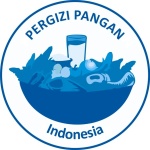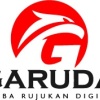ANALISIS FINANSIAL DAN RANTAI PEMASARAN CABAI RAWIT DI KECAMATAN SUKAMULIA KABUPATEN LOMBOK TIMUR
Abstract
The aims of this research are to: (1) Analyze the costs, income and feasibility of cayenne pepper cultivation in Sukamulia District, East Lombok Regency. (2) Analyze the marketing chain of cayenne pepper in Sukamulia district, East Lombok Regency; (3) Analyze the actors of cayenne pepper marketing in Sukamulia District, East Lombok Regency; and (4) Analyze the marketing margin of cayenne pepper in Sukamulia District, East Lombok Regency. The method used is a descriptive method, while data collection is carried out through survey techniques. The data were analyzed descriptively. The research results show that: The average production cost of cayenne pepper cultivation in Sukamulia District, East Lombok Regency for the dry season in 2023 is IDR 12,648,055/LLG or IDR 50,592,220/ha, while the income earned is IDR 42,756,945/LLG. or IDR 171,027,778/ha. The cultivation of cayenne pepper in this area is worthy of final development as indicated by the ratio R/C = 4.38 (R/C > 1).(2) There are 3 (three) cayenne pepper marketing chains in Sukamulia District, East Lombok Regency, namely; I: Farmers – Village collector traders (PPD) – Inter-island traders (PAP) – Retailers – Final consumers; II: Farmers – Subdistrict collector merchants (PP Kec.) – Anatar Island merchants (PAP) – Retailers – Final consumers; III: Farmers – Village collector traders (PPD) – Retailers – Final consumers; (3) The marketing functions carried out by each actor in the marketing chain are: (a) farmers sell, store, transport, classify and assume risks; b) village collector traders (PPD) carry out purchasing, sales, transportation, storage, sorting, financing, risk-taking and market information; c) subdistrict collector merchants (PPKc) carry out purchases, sales, transportation, storage, classification, financing, risk assumption and information; and d) inter-island traders (PAP) do the same as PPD and PPKc; and (e) retailers do the same as PPD, PPKc, PAP, except financing; (4). The marketing margin in chain I is 12.07%, higher than the marketing margin in chains II and III, that is, 8.62% and 5.95% respectively. The difference in margin between marketing chains is due to the difference in consumer prices and farmer prices, and not. for marketing costs

This work is licensed under a Creative Commons Attribution 4.0 International License.






